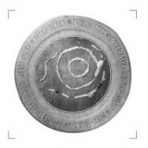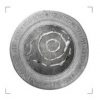The majority of animal bones and teeth from the site of Vetricella have been recovered from archaeological contexts dated to Period 4 (second half of 10th– mid 11th centuries A.D.) and, to a lesser extent, to Period 5+6 (mid 11th – mid 13th centuries A.D.).
The zoo-archaeological results show strong similarities between the two analysed chronological periods. Indeed, both in Period 4 and Period 5+6, the three main domestic species (cattle, caprines and suids) are the most represented animal species. In details, suids are the most abundant animals, while caprines are scarcely represented; cattle are the second most present species, their presence slightly increases in the Period 5+6.
The presence of both adult and sub-adult equids is also important; the robustness and large size characterising most remains might suggest their taxonomic attribution to the horse and not to the donkey or other equid hybrids, whose potential presence in the site can not be completely excluded.
The incidence of wild animals (which represent less than 4% of the fauna sample) is scarce; among these, remains of red deer (Cervus elaphus) and/or fallow deer (Dama dama) have been identified. In addition, a number of mandibles of roe deer (Capreolus capreolus) were also recorded. Among cervid anatomical elements, some worked antlers were also present (Fig.1)

The biometrical analyses and the recording of suid neonatal remains (Fig.2) suggest a predominantly domestic nature of the suid populations present at Vetricella; the presence of this latters might suggest that suid husbandry occurred on site, or on its vicinities.
The production of specific meat cuts is testified by the high incidence of pig scapulae (Fig.3), most of which presented butchery evidences. This information could suggest the existence of specialized slaughtering practices at the site.




